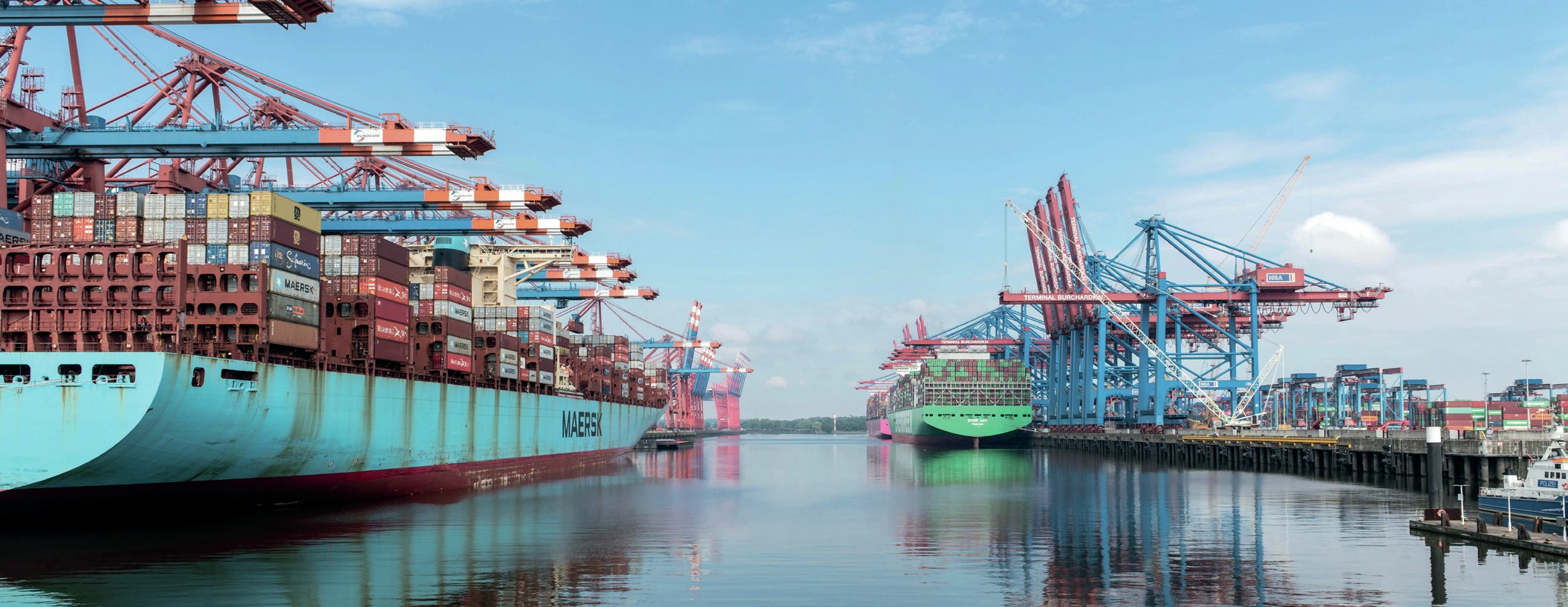Fertilizer International 512 Jan-Feb 2023

31 January 2023
Murky outlook for potash
MARKET REPORT
Murky outlook for potash
The global potash market has endured a tumultuous 18 months, says Andy Hemphill, senior editor for potash and sulphuric acid at ICIS Fertilizers. Export sanctions, high offer prices and buyer unrest persist as we enter 2023.

Two key attributes
Being extracted, processed and sold on a massive scale, muriate of potash (MOP) has two remarkable attributes. Firstly, It’s one of the world’s largest fertilizer types by volume – with an annual global production capacity of around 90 million tonnes and a traded volume of circa 70 million tonnes. Secondly, the global MOP market is dominated by just a handful of large-volume producers.
These two attributes reflect the nature of the product: MOP is an umbrella term for potassium chloride (KCl) fertilizers, usually offered in the form of bulk granules or occasionally as a powder. These products are simple to bag and ship and can be used straight or blended. MOP is also relatively painless to mine, process and granulate – compared to the phosphate fertilizer production process and the chemical manufacturing of ammonia and urea.
What really marks out MOP, though, is the limited locations where potash is found and commercially extracted as a mineral fertilizer. These are restricted to approximately 18 countries around the globe.

Pre-2021 market stability
Prior to 2021, the global potash market was relatively stable, with three large Canadian, Belarusian and Russian producers and exporters predominating (Table 1). State-run Belaruskali and its MOP marketing arm Belarus Potash Company (BPC) controlled Belarusian exports, while Uralkali marketed Russian potash mined from that nation’s considerable deposits. In Canada, MOP marketing firm Canpotex handled exports for North America’s two major potash producers, Mosaic and Nutrien (the world’s largest fertilizer company).
Each year, key benchmark supply contracts for MOP – agreed between the large-volume producers and major buyers in China and India – offered the potash market price direction for the year ahead. Palm oil plantations in southeast Asia generally filled their warehouses with MOP with ease, while agricultural powerhouse Brazil regularly became a hotbed of import activity, thanks to its almost endless appetite for granular MOP.
May 2021 changes everything
The MOP trade has been a lucrative export earner for those countries where raw potash ore can be successfully extracted at scale, processed and sold commercially. Looking back, the market was enjoying a period of relatively calm – up until the moment when Belarus forced Ryanair Flight 4978 out of the skies. This catalytic event kicked-off a period of unprecedented change that, while still unfolding, has completely rerouted the potash market and its long-established supply/demand dynamics.
In May 2021, Minsk ordered the grounding of Flight 4978, ostensibly because of a bomb threat, before removing dissident blogger Roman Protasevich and his partner Sofia Sapega from the aircraft. The two are still in custody at the time of writing (December 2022).
Western countries quickly condemned the move and were fast to act. In a few short months, they imposed sanctions on the money-spinning Belarusian MOP export industry, as well as a wide variety of other export goods. Belarusian business leaders who had been profiting from president Aleksandr Lukashenko’s regime were also sanctioned individually.
The largest repercussion of these sanctions was the ending of a longstanding agreement between Belarusian Potash Company (BPC, the country’s state-run MOP marketing arm) and two key partners in Lithuania – the port of Klaipeda and Lithuanian Railways. Klaipeda was BPC’s primary MOP export hub and distribution centre for its worldwide sales. BPC was also reliant on Lithuanian Railways for trans-shipment via this essential port.
In effect, sanctions at a stroke cut off the main MOP supply route from landlocked Belarus to the global marketplace – including the three key MOP-consuming nations, India, China and Brazil (Table 2).
While Minsk responded to its exclusion from the Baltic with talk of exporting MOP through overland routes via Russia, industry sources dismissed this option as unworkable, particularly as Russian ports are already busy shipping Russian MOP. Aleksandr Lukashenko’s government subsequently suggested that Russia would build additional port capacity dedicated to Belarusian tonnages – a claim that has yet to be realised.
India’s buyers, meanwhile, signalled their willingness to continue buying Belarusian MOP by talking-up the prospects or a rupee-denominated trade deal. This was, however, quickly dismissed as “posturing [by Indian buyers] to get [other] people to notice and close contracts”, according to one trader in late 2021.
Unlikely or not, before such a deal could be put together, another disruptive jolt hit the global MOP market at the end of February 2022: Russia invaded Ukraine – with military forces crossing into its neighbour from Belarusian territory to do so.
Predictably, The Lukashenko regime’s support for the invasion caused a fresh wave of sanctions to come crashing down on the Belarusian MOP industry, closing any remaining loopholes that were left. This time around, the EU effectively banned around 70 percent of its MOP imports from Belarus, closing down any overland road and rail supply routes which were still open.
The consequence was that, by mid2022, Belarus was largely cut off from the global MOP market. The country’s vast stockpiles of potash were left awaiting shipment through Russia and into China by railway, or for shipment to Russian ports for export to other destinations, albeit in far smaller volumes than normal.
By September 2022, the Belarus Potash Company was thought to have exported only 4-5 million tonnes of MOP in the year-to-date – less than one-third of its normal annual production capacity of circa 13 million tonnes. At that time, monthly Belarusian MOP production was heard to be languishing at around 300,000 tonnes. Since then, however, reliable MOP export information has been hard to come by, as Belarus ceased issuing customs data in late 2021.
The war in Ukraine
With Belarus potash supply largely blocked by sanctions, that left Canada and – briefly – Russia as the two largest suppliers of MOP to the global marketplace.

Russia’s invasion of Ukraine on 24th February 2022 was met with widespread and immediate condemnation of president Vladimir Putin and his regime, and soon after attracted a wave of Western sanctions on Russian exports, businesses, and oligarchs.
While Western sanctions did not specifically target Russia’s potash exports, there were mounting concerns that these would be indirectly affected. Restrictions on bank transactions, for example, were making commodity trading with Russia increasingly difficult. Getting insurance for shipping to and from Russia was also becoming problematic. Additionally, there were drastic boardroom reshuffles at several major Russian and Russian-owned fertilizer producers due to sanctions aimed at specific Russian oligarchs. Unsurprisingly, Russian MOP exports declined steadily in response to these cumulative effects.
Fertilizer market impacts then worsened when the European Commission extended EU export sanctions to include a range of fertilizer products – including phosphate fertilizers, MOP, nitrates and NPK blends – in October 2022. Although these sanctions stopped short of entirely banning the import of Russian MOP into Europe, tonnages are thought to have declined in recent months, compared to the volumes seen in recent years (Table 3).
Across the global potash market, the result was that buyers spent late 2021 and much of 2022 wondering where their MOP tonnages were going to come from.
Offers skyrocket
During the first half of 2022, MOP import prices at most ports climbed rapidly as sanctions on Belarus and Russia spurred a wave of panic-buying.
Brazil – having little domestic potash production of its own – experienced the most pronounced price rises. By March 2022, potash import prices peaked at $1,250/t cfr (cost & freight) Brazil – the highest price ever recorded by ICIS. Supply concerns led buyers to stock-up, while producers granulated as much MOP as they could to ship to potash-hungry Brazil.
March’s peak was then followed by a slow decline in MOP price offers during the rest of the year (Figure 1). This was due to a sluggish Brazilian market characterised by weakening potash demand and growing oversupply. Essentially, given ample availability, Brazilian buyers were reluctant to purchase potash at elevated prices they had not budgeted for.


In Europe, the high price of standard-and granular-grade MOP led some farmers to delay their purchases. Russia’s invasion of Ukraine also left Europe’s sulphate of potash (SOP) producers reluctant to fire up their Mannheim furnaces – due to worries over the effects of high natural gas and power prices on their margins.
Having emerged as the world’s largest undisputed MOP producer in recent months, Canadian producers responded to the supply shortfalls and all-time price highs in 2022 by upping their output. Indeed, Canada’s Nutrien revealed plans to raise its potash production in 2022 by nearly one million tonnes to 15 million tonnes. Although substantial, this boost to global supplies still fell well short of the deficit left by the absence of Belarus from the global MOP market and the reduction in Russian tonnages.
Elsewhere, producers in Germany, Israel, Jordan, Chile, and other smaller enterprises, also stepped in to meet demand where they could.
In southeast Asia, offers for standard-and granular-grade MOP showed the same pattern of all-time highs followed by slow decline seen in Brazil. It was a similar story in China, where supply concerns saw the country’s MOP import prices spike.
Chinese domestic MOP availability was already tight before the Russia-Ukraine conflict began, as importers had opted to sit on inventories rather than sell, in expectation of higher prices to come. This standoff forced Beijing to release product from national stockpiles to ensure MOP price offers remained at a reasonable level for buyers.
BUMPER PROFITS FOR POTASH PRODUCERS
Potash producers in Canada, Germany and Israel have been well placed to capitalise from the global potash market’s supply shortfall. Companies such as Mosaic, K+S and ICL have stepped in to fill the deficit left by reduced Russian MOP exports and the increasing withdrawal of Belarus from key MOP import markets. As a result, these companies have raked in proceeds, as is shown by the leap in potash sales and earnings this year (Table 4).

China typically imports around 60 percent of its annual MOP requirement. Russia is usually the country’s second-largest supplier, thanks to well-established rail links. Belarusian supply is now also proving popular in China – this notably being the one route to market not curbed by Western sanctions.
What next for the potash market?
At the start of a new year, the foremost question in potash player’s minds is always the same: “What happens next?” 2023 is no different.
Frankly, though, there is no clear path out of the disruption inflicted on the global MOP market over the last 18 months. In particular, the loss of a huge portion of the 12 million tonnes of annual exports from Belarus has left the global market with an immense supply shortfall, thanks to sanctions and export restrictions.
Yes, Russia is still exporting. But the volumes leaving Russian borders are well below expectations – a situation that is unlikely to change until the Ukraine invasion ends. Even then, some judge it very unlikely that borders will immediately open, given the attitude of the west to Russia’s unprovoked attack on its neighbour to the west.
While MOP producers in Canada, Israel, Jordan and Germany have – where possible – all raised their output to help meet demand, these additional tonnages are mainly earmarked for high-return destinations such as Brazil, or being directed to existing contract customers to make up for lost tonnages from Belarus and Russia.
This situation has left large-volume standard-grade MOP buyers in China and India – two countries that traditionally set bellwether benchmarks for the whole industry – cripplingly short of tonnes. Then there is the question of the annual import contracts for both China and India – contracts for which Belarus is typically the first to secure a price settlement.
With Belarusian tonnes hard to come by, many players feel that Canpotex, Canada’s MOP marketing giant, will now fill the role of market trendsetter. There are already signs that this is happening. In late September, Canpotex signed a memorandum of understanding with three long-time customers, Indian Potash Limited, Coromandel, and Chambal Fertilizers, for the supply of up to 500,000 tonnes of potash annually between 2023-2025.
While it is true that substantial additional potash production capacity is expected to emerge, this is not expected to come fully online for up to five years – doing little to ease the immediate shortfall. Essentially, the current global MOP shortfall cannot be filled tomorrow, next year, or the year after.
Laos potash pushes further into southeast Asian markets
MOP exports from Laos have enjoyed an increased presence in southeast Asian markets since the beginning of the Belarus/Russia supply squeeze, offering a lower-cost alternative to imports from Europe and North America.
Standard-grade MOP product from Laos is primarily shipped in powdered form. This is typically priced at a discount relative to standard- and granular-grade MOP imported from Russia, Germany and Canada. Potash buyers in the region have therefore taken to supplementing Canadian and European MOP imports with tonnes from Laos to reduce overall expense.
There is expectation that investment by potash producers in Laos will soon improve the availability of standard-grade product in granular form from the country. Greater amounts of granular-grade MOP from Laos, which commands a premium over standard-grade MOP, will also become available.
The price of potash imports into southeast Asia climbed fast in 2022, driven upwards by supply concerns following sanctions placed on Belarus, and Russia’s invasion of Ukraine, eventually hitting $1,200/t cfr (cost & freight) in June (Figure 2).
Price offers subsequently declined to around $600-700/t cfr by December 2022 for both standard- and granular-grades. While these price levels were at considerable discount from earlier in the year, offers are still more than double the $250-280/t price range seen in January 2021, before the first wave of sanctions were placed on Belarus

In the interim, a lack of potash availability could see some farmers opt to skip applications or swap potash for additional nitrogen or phosphorous fertilizer applications – decisions that might not affect some crops too badly for a couple of years. Other crops, however, will suffer quickly from a lack of potassium. The resulting yield reductions then risk a vicious circle of reduced fertilizer purchases and eventual demand destruction.
High potash prices are also here to stay in the short-to-medium term, although these are unlikely to climb to the highs seen in mid-2022 – mainly because of the reluctance (and/or inability) of farmers to pay for fertilizer inputs which are this expensive.
What is clear is that the supply/demand dynamics of the global potash market have already changed forever – and that these changes still have some way to go.






